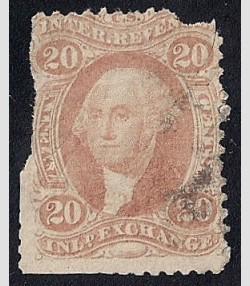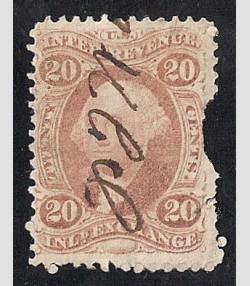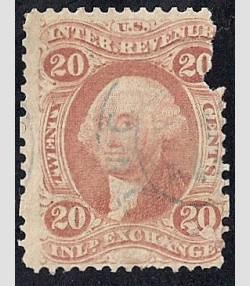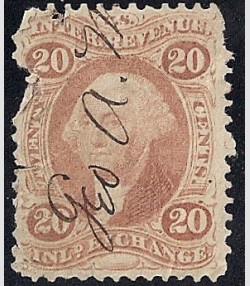Junk Dealers will hurt Hipstamp
Listings like below Cheapens Hipstamp. Dealers / Sellers that post crap like below need to remove it or be kicked from Hipstamp.








This discussion has been closed.


Comments
seriously.. another slippery slope that i do not think HS wants to travel down. grading other's stamps? is similar to dictating the price and banning words like scarce and rare. Also similar to a ban seller and buyer list. :-)
reminds me of Delcampe banning cheap stamps by way of adding a fee to them? that is how it starts and progresses from there.
Ross
https://www.hipstamp.com/store/ross-stamps
Ross, eBay has micro manages this type of material in the past.
Jerry, Great idea you can purchase all the crap and that will take care of the problem. LOL
Can you please explain HOW dealing with sellers of this type of material is in anyway,shape or form the same as trying to deal with those using rare or scare in the tile the same thing? Paypal has long had the buyers protection for this type of junk for how long now? Is it wrong for a site to become proactive before it becomes an image problem with the site?
Didn't Ebay go through through this already of being a garage sale type site BEFORE they cleaned it up somewhat?
Why do you think both Ebay and Paypal went that way with the buyers protections?
the reason it is similar is a thing called "control" the more you attempt to control a thing the more you limit it's abilities. Pricing and quality are just two of the type of controls a site can do. Paypal does not judge quality.. the pictures and description do that. in this case the pictures are doing a great job. :-) so don't confuse buyer protections with the item that is pictured correctly and described correctly though in this case a description is not necessary. Paypal also does not protect against snad on sites other than Ebay unless they have changed their policies in the past years?
using the terms rare , scarce, or any other combination of words in a description are also the the right and in some cases the responsibility of the seller. to control by limits this is "similar". as in all things there is a unreasonable area also as in $1,000,000 5c stamps and foul bad or offensive language in descriptions. extremes become the job of the owners of the site imo
I also have never ever heard of Ebay pulling a stamp because of quality. As far as i know these stamps can be listed on Ebay at any price as long as they are pictured and described correctly. Am i wrong on this?
block bidder buyer seller list are also a great way to allow a site to degenerate to nothing. my opinion, see other thread on this for my details as i will not want to repeat myself on this.
I might also add that most sellers get an idea after a bit of stamps not selling . the problem is the slippery slope and where does it start and end? the site here is not free it is $5 a month or $60 a year. so it would seem silly to post things like this :-) but hey i think they should be allowed to pay. the amount of sellers that can not see the logic in not posting stuff of this quality will be very few . so really not worth creating a controlling rule that would be basically impossible to enforce fairly or with expertise that covers all buyers wants.
"I also have never ever heard of Ebay pulling a stamp because of quality. As far as i know these stamps can be listed on Ebay at any price as long as they are pictured and described correctly. Am i wrong on this?"
You are not wrong. Ebay dissolved the stamp discussion board because they were discussing listings in which the stamps had been altered and repaired or outright forgeries. It still exists somewhere and if I were going to buy an expensive stamp on Ebay I would run it by the group. But Ebay chose to ignore the experts an allowed the selling of altered, repaired and spurious issues to continue because it's all about money to them (and avoiding liability).
Ebay has pulled hundreds and hundreds of stamps from their site. I had two stamps pulled because they said they had faults. I called them and sent large large scans to them and faults turned out to be Dark Cancel Marks. They were relisted and sold on eBay for over 100.00 each. eBay sent me an email with sorry for our mistake and didn't charge me the sales fees.
eBay also had a contract with APS to monitor the listings and remove the ones they felt were not up to the standards of APS and eBay.
Control can be good and in case of E Com Sites a must.
Amazon has great control over all their sellers and they don't put up with shit from any of them.
Jerry - I was talking about the old Ebay discussion group that was disbanded probably ten or fifteen years ago. It consisted of some pretty decent people - Richard Frajola (now Philamercury), Matt Liebson (chairman of the APS Membership Committee) and a lot of other very knowledgeable individuals. Are you talking about a member of that group or are you talking about Stampboards (which is located in Australia and run by Glen Stephens) where I have been the recipient of misinformation before. .There was also another group formed in the US after the old group was disbanded by Ebay about which I know little except that I have heard them referred to...
Most Sellers allow returns with no questions asked- including me. it is hard to argue with that refund policy. :-) I do it everywhere i sell including my website. so if you are Drunk buying on Ebay or my website late at night.. just return the items or better yet .. don't pay.. i am fine with too.
Some people like postmarks and the quality of the stamp is irrelevant. And when I list a decent stamp with a missing corner for 5 - 10% of retail, they get snapped up. Not everyone has heaps of money to spend, and it is not really a requirement for enjoying stamp collecting.
stamps should be described if thins, tears, pin holes, re perfed, repairs, gum or not, hinged , creases or hinge remnants
and of course selling fake or altered stamps.
obvious intentional lying should get you removed from a site as it is theft.
server resources are one thing but then there is data base storage capacity. they really are two different things. Delcampe blamed to 75 million? listings on those selling cheap stamps. My guess as you stated.. it was all a scam to get more fees. The band width stays the same as viewers can only view one page at a time ..generally :-) Data Storage is so cheap that it is almost free. Horrible programming and a scam to collect more fees?
Fees- Delcampe was charging a gold membership fee. I assume most paid it that were selling. I will refrain from calling SEB and the morons that worked for him names here but I will say that their is a lot of rotten cheese in Belgium
My major areas of concentration for more than 50 of those years were Egypt and Sudan, particularly on the overprinted/surcharged issues. I delved deeply into many of the little-understood, or terribly misunderstood, aspects of the philately of both countries.
From 1966 until 1994, I spent 28 years in various highly technical areas of the printing-prep industry, working with typography, lithography (offset, as well as classical [i.e., "stone"]), and photogravure. I was also privileged to spend time with a group of gifted craftsmen who kindly educated me about the finer points of steel/recess/intaglio engraving. As a result of my long, hands-on experience in those fields, I have developed a deep and invaluable understanding of postage-stamp printing, a skill that is essential to my philatelic pursuits.
In order to properly study, in-depth, the various issues upon which I concentrated: Sudan's 1897-1907 First-Issue overprints on Egyptian stamps and postal stationery; Sudan's "ARMY OFFICIAL" and "Army Service" overprints, etc.; Egypt's 1866 1st Issue; Egypt's 1922-1923 "Kingdom" and "O.H.E.M.S" overprints; Egypt's 1953-1956 3-barred King Farouk portrait-obliteration overprints; the overprinted stamps of Egyptian-occupied Palestine and Gaza, just to name a few), I found that I needed to obtain large quantities of stamps for my research.
It took me many years of effort (and expense) to accumulate a substantial holding of the stamps and covers from my chosen fields of research (at one point, I had over 30,000 examples of one stamp!) Having the necessary “fuel for the fire” enabled me to spend thousands of hours on my projects, and I eventually developed a comprehensive knowledge of their characteristics and of their various printings. During those years, I attended hundreds of stamp shows, both here and abroad. I made many trips to Egypt from 1977 to 1998 (generally for a month each time), interacting with fellow philatelists and dealers in Cairo and in Alexandria (I even went to Sudan in 1998). Some of my most productive efforts involved visiting the bundle dealers (in the poorer areas, where I would not even dare to go today!) Thankfully, I was able to obtain large quantities of material (including many full sheets and panes, no longer easily found). As the years progressed, with the birth of the Internet and of online stamp-sales venues, I was further able to obtain the material that I needed.
HERE (AT LAST!) IS THE POINT OF MY LENGTHY MISSIVE: If one wishes to obtain large numbers of stamps for philatelic research, then THE CONCERN THAT EVERY STAMP OBTAINED FOR STUDY HAS TO BE WITHOUT FAULTS (I.E., IN PERFECT CONDITION) MUST TAKE A BACK SEAT TO THE NECESSITY OF ACCUMULATING A SUFFICIENT NUMBER OF EXAMPLES FOR ONE'S PROJECT! IT IS AN INDISPUTABLE FACT THAT STAMPS WITH DEFECTS STILL ARE USEFUL, THAT THEY STILL ARE ABLE TO TELL THEIR STORY! In accumulating items for my research, I accepted this fact. The knowledge that I acquired by studying large quantities of examples of ostensibly the same stamp, both sound and defective, enabled me to complete a number of projects.
In 2003, after seven years of mind-boggling preparation, Joe Chalhoub and I released "THE NILE POST HANDBOOK AND CATALOGUE OF EGYPTIAN STAMPS", an 860-page, exhaustively detailed, hardbound reference work, containing the expansive results of many of my various studies, including a 25-page chapter on ALL of the aspects of the stamps and postal stationery of the Sudan First Issue. In addition to its chapters (listing and explaining a multitude of errors and varieties) covering the definitives, the commemoratives, the airmails, the officials, the express stamps, the postage dues, etc., there are also extensive chapters covering: Egyptian essays; the stamps of the Suez Canal Company; the stamps and postal stationery of the French Post Offices in Alexandrie and Port-Saïd; the NAAFI letter seals and letter stamps; the stamps of Egyptian Palestine/Gaza, etc., etc.)
Thankfully, "The Nile Post" now has become the Egypt "bible" for a large percentage of the global philatelic auction houses, and it is used by many collectors and dealers as the essential reference work for Egyptian stamps. MUCH OF MY RESEARCH, AS PUBLISHED IN THE BOOK, COULD NOT HAVE BEEN COMPLETED WITHOUT MY STUDY OF DEFECTIVE STAMPS!
We should all bear in mind, WHEN PURCHASING FAULTY STAMPS (OR COVERS), THAT THE PRICE PAID MUST BE BASED UPON THE ITEM’S CONDITION! There is no question that many online sellers offer damaged stamps (i.e., thinned, pulled perfs, missing corners, creases, missing pieces, etc.) and covers (i.e., missing or damaged adhesives, fronts only, folds through the stamps, offensive stains or marks on the reverse, missing flaps, etc.) without making mention of the faults, and without assigning a fair price based upon the defect(s). In the case of scarce or rare (i.e., "expensive") stamps or covers, this nefarious practice is ABSOLUTELY INEXSCUSABLE! I have paid some pretty hefty prices for better stamps and covers, only to find, when receive them, that they have defects that are not seen in the scans. Nevertheless, even damage to cheap stamps and cheap covers should be mentioned by the seller. Of course, it would be extremely labor-intensive for hipstamp.com to monitor thousands of listings, so the buyer must beware! Most sellers will allow you to return material that has proved to be unsatisfactory, BUT: Some sellers have a “No Returns” policy (I am hesitant to deal with such people), so you should always check the seller’s terms before bidding or purchasing an item.
I have one last story about seemingly defective stamps, and then I will quit! Early last year, while browsing through a seller's store, I came upon a "Buy It Now" offer of a single, used example of Egypt Scott #349, the 10 mills deep violet Farouk definitive with the 3-bars overprint, issued in April of 1953 (arguably one of the most common stamps of Egypt, and the stamp of which I had 30,000 copies). The scan showed that the stamp was missing its northeast corner, a fault not mentioned by the seller, who was asking C$ 0.15. However, what the seller did not realize was that THE 3-BARS OVERPRINT (UNQUESTIONABLY GENUINE) WAS INVERTED! The defective corner therefore was only a small detraction as, until that moment, ONLY TWO EXAMPLES OF THIS INVERT ERROR WERE KNOWN TO EXIST! Both were found by me. One was in a bundle, and the other was used on a postcard. IT IS ONE OF THE RAREST STAMPS OF EGYPT, and is listed in "The Nile Post" as NP#D217c, footnoted as to its rarity (and greatly undervalued, considering today's market for good Egypt). Did I purchase the stamp? You bet! The SPECTACULAR news is that when the stamp arrived, I discovered that the corner was NOT missing! It had been folded backward, behind the stamp. I advise any of you who have examples of Egypt Scott #349 to check them, as you might discover another invert (on a genuine invert, the lengths of the three bars diminish from bottom to top, and their ends taper \ / instead of / \).
The bottom line of this probably all-too-lengthy ramble is that DEFECTIVE STAMPS CAN BE USEFUL. Just be aware of what you are purchasing!
Regards to all, CHARLIE HASS